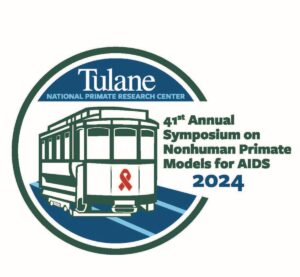A new paper co-authored by three WaNPRC researchers in Frontiers in Immunology indicates that people with HIV may be at greater risk for prolonged Zika virus (ZIKV) infections, and that people vulnerable to mosquito-borne illnesses like Zika would benefit from protections like vaccines.
The paper, “Persistent innate immune dysfunction and ZIKV replication in the gastrointestinal tract during SIV infection in pigtail macaques,” suggests that people living with HIV may be at greater risk for prolonged Zika virus infections and that the virus stayed in the body longer.
Dr. Megan O’Connor, Director Deb Fuller and former WaNPRC researcher and current affiliate Dr. Michael Gale contributed to the paper. The study looked at nonhuman primates (NHPs) co-infected with simian immunodeficiency virus (SIV) and Zika, the disease involved in a well-known outbreak in the Americas in 2015-2016 that infected tens of thousands of people and caused symptoms ranging from a rash and fever to microencephaly in babies (an abnormally small head), and even death. In the study NHPs had a harder time fighting off Zika, and the Zika virus stayed in their body longer, especially in places like the gut.
They wrote: “Collectively, these findings uniquely suggest that untreated SIV infection may promote inflammatory cellular innate responses and create a state of persistent immune activation that contributes to prolonged ZIKV viremia and persistence in the gastrointestinal tract. Furthermore, these results suggest that people living with HIV and other immunocompromised individuals could be at higher risk for prolonged ZIKV infection, potentially extending the window of ZIKV transmission. These insights highlight the importance of including people living with HIV in strategies for deploying vaccines and treatments against ZIKV.”
In other words, this indicates that people living with HIV, who have weaker immune systems, might have a harder time fighting off Zika, and it could stay in their bodies for a longer time. The researchers said this means public health officials need to make sure such people get treatments, such as vaccines, to help them fight off Zika more effectively.
You can read the entire paper, here.
Dr. Fuller was appointed director of WaNPRC in late last year.
Dr O’Connor was appointed in February to the University of Washington faculty as Assistant Professor in the Department of Laboratory Medicine and Pathology. She is a Core Scientist in the WaNPRC Infectious Disease and Translational Medicine Unit and focuses on HIV viral co-infections with the goal of improving treatment and vaccine strategies for people living with HIV and other immunocompromised people.
 WaNPRC’s Interim Assoc. Director for Research, Kristina Adams Waldorf collaborated on a four-part series with other researchers in
WaNPRC’s Interim Assoc. Director for Research, Kristina Adams Waldorf collaborated on a four-part series with other researchers in  Neuroscience core scientist Amy Orsborn published a
Neuroscience core scientist Amy Orsborn published a  Congratulations to Dr Megan O’Connor on her appointment as Assistant Professor to the Department of Laboratory Medicine and Pathology at the University of Washington!
Congratulations to Dr Megan O’Connor on her appointment as Assistant Professor to the Department of Laboratory Medicine and Pathology at the University of Washington!
 In
In  And it’s led to the development of products that produce these alternating blue/orange wavelengths. Called “
And it’s led to the development of products that produce these alternating blue/orange wavelengths. Called “ Increasing investment and support for neuroscience research involving monkeys is critical to realize our hope for advancing human health and reducing suffering for millions of people confronting diseases like Alzheimer’s, bipolar dis- order, depression, anxiety, schizophrenia. So argues Dr. Michele A. Basso, core scientist in the Neuroscience unit of the Washington National Primate Center.
Increasing investment and support for neuroscience research involving monkeys is critical to realize our hope for advancing human health and reducing suffering for millions of people confronting diseases like Alzheimer’s, bipolar dis- order, depression, anxiety, schizophrenia. So argues Dr. Michele A. Basso, core scientist in the Neuroscience unit of the Washington National Primate Center.